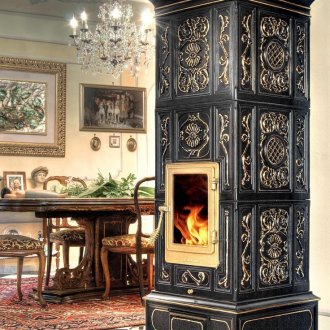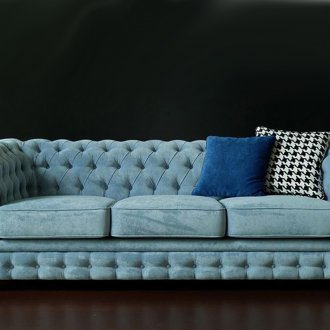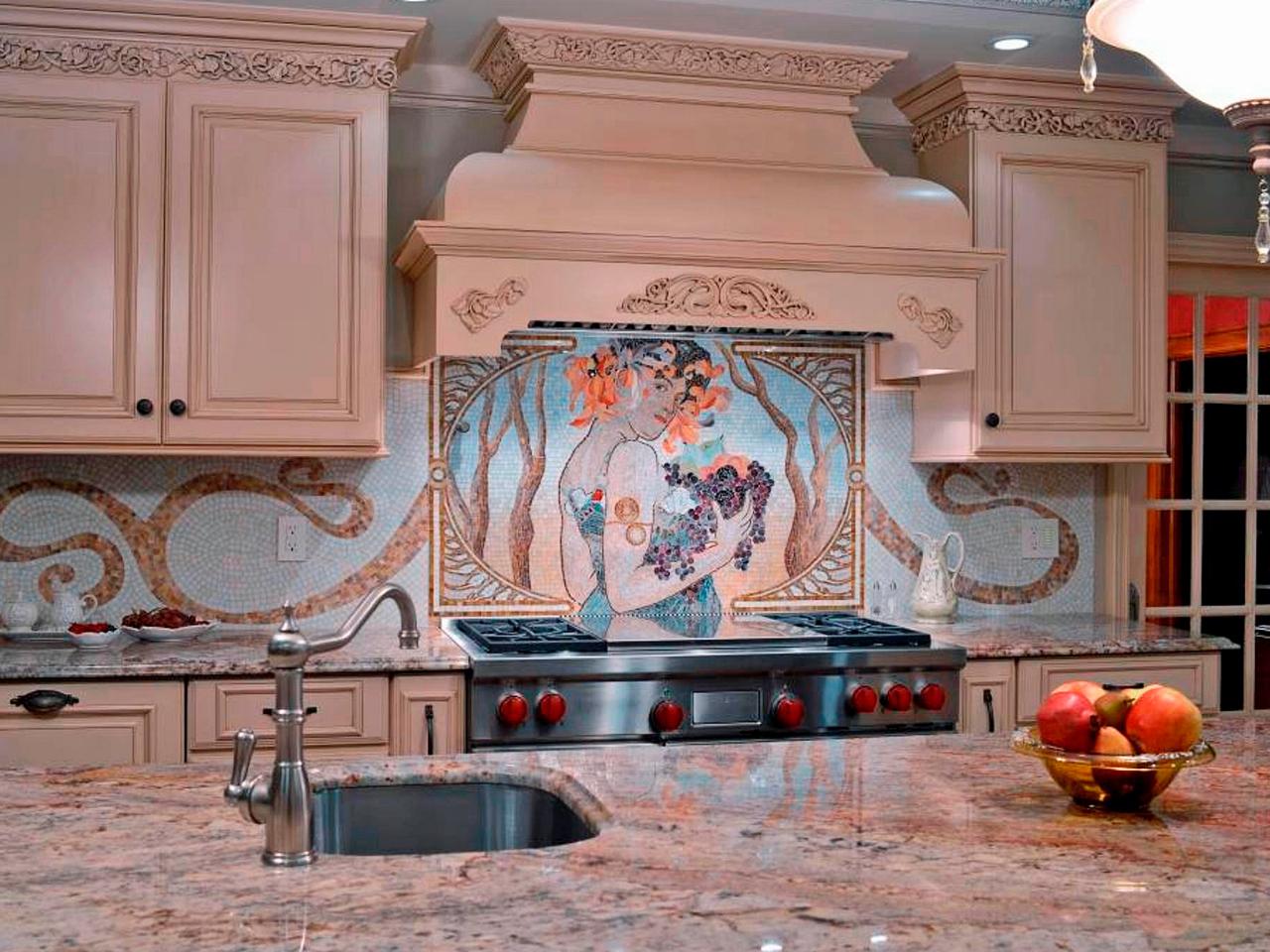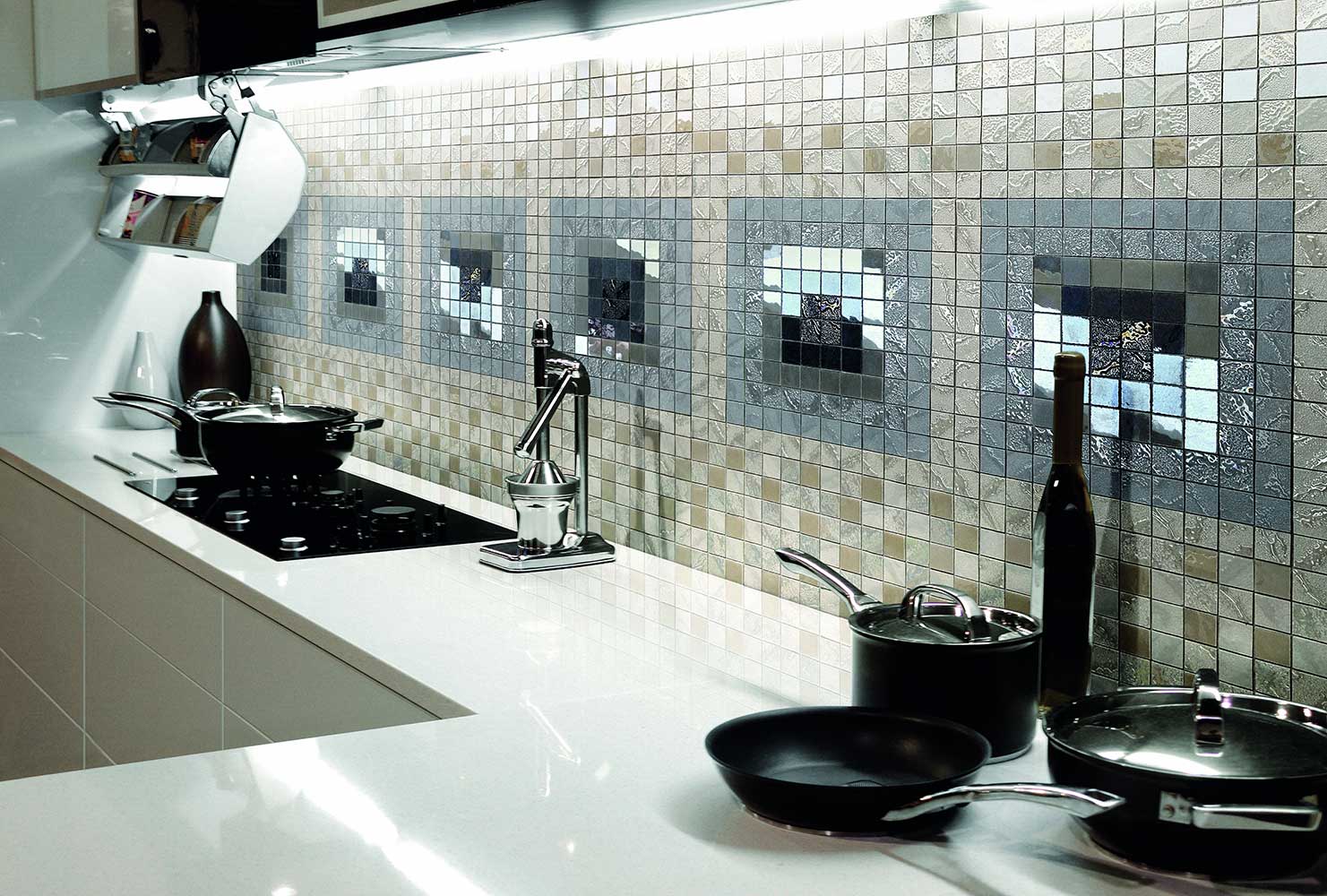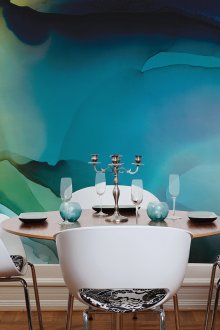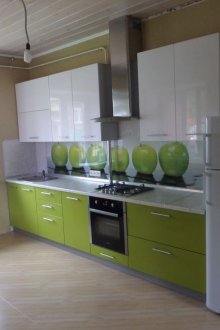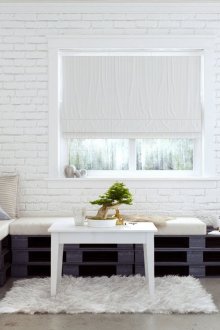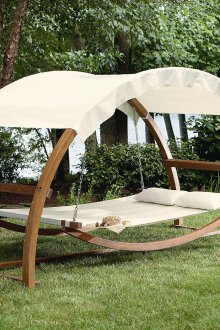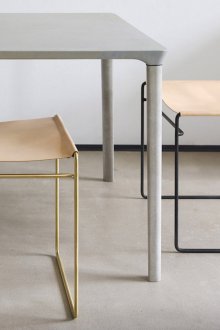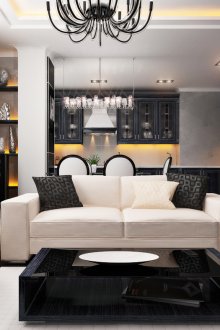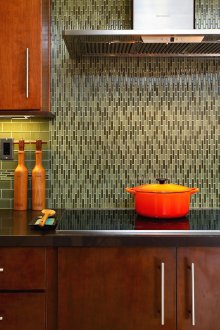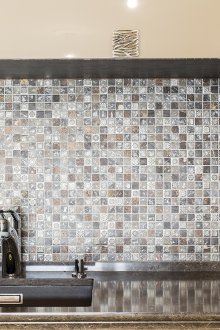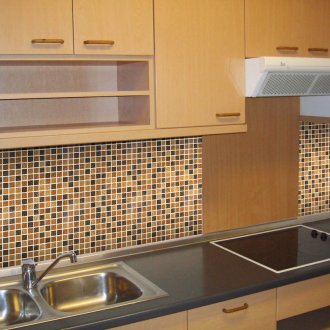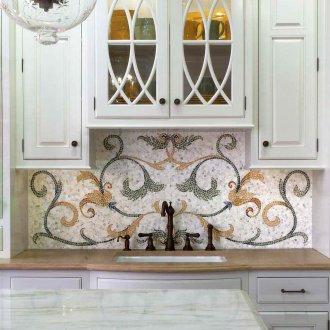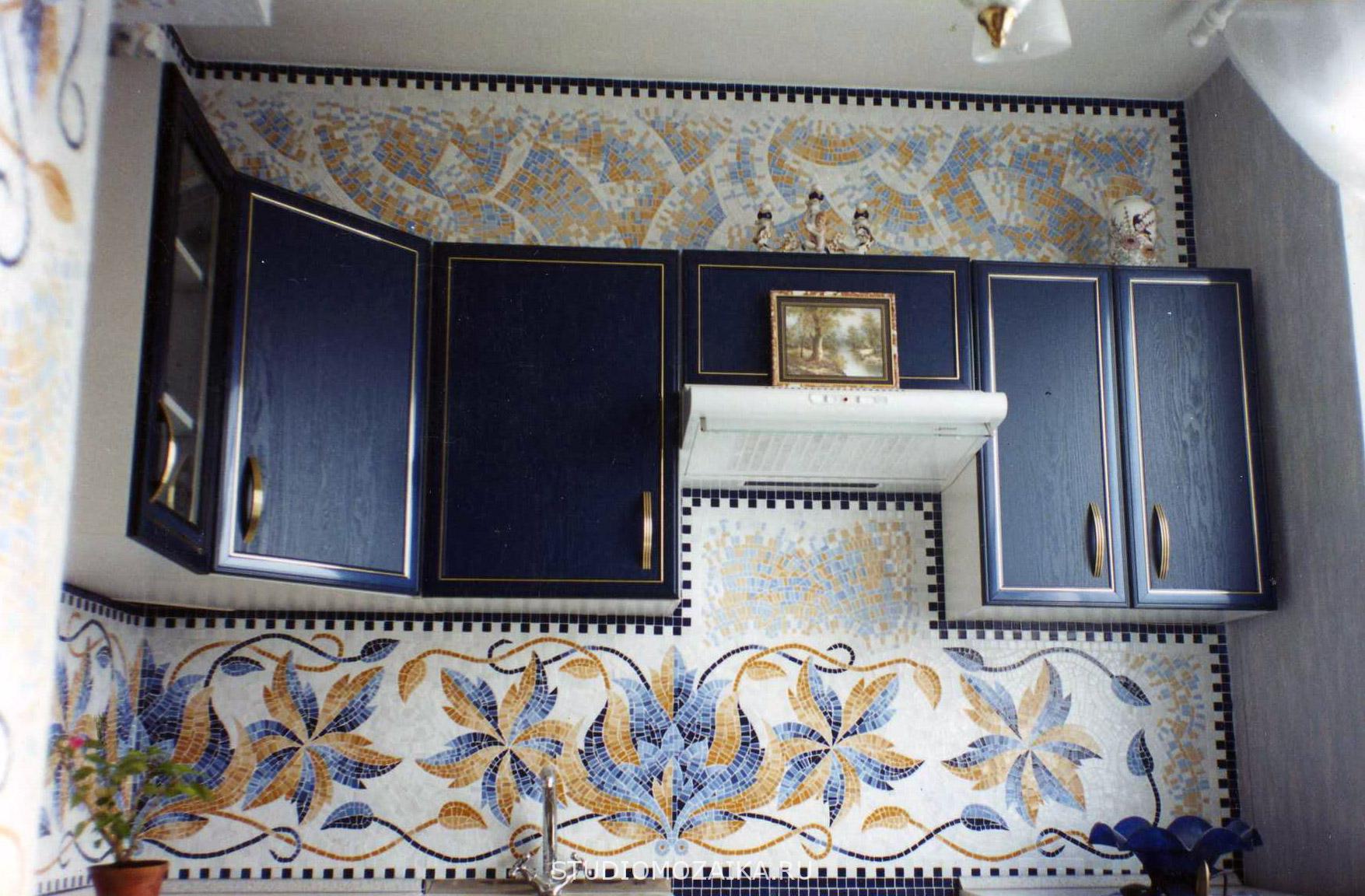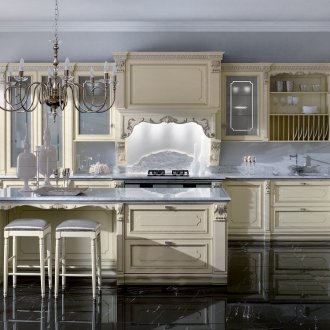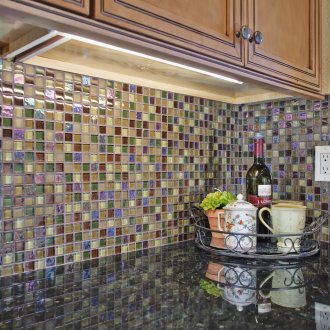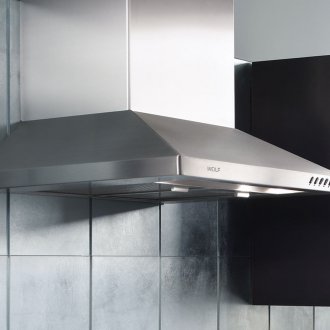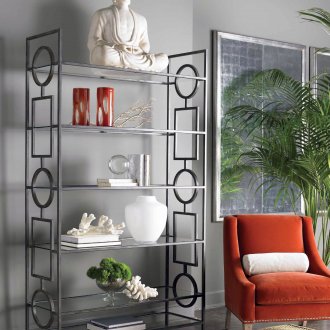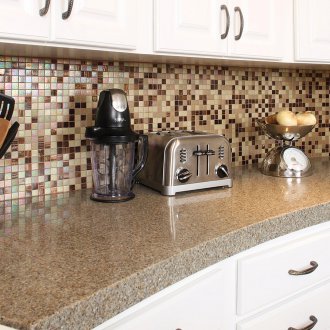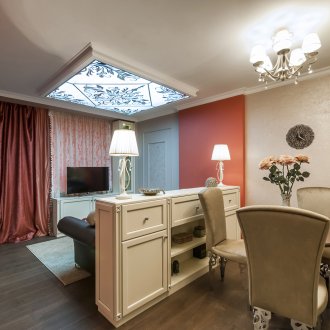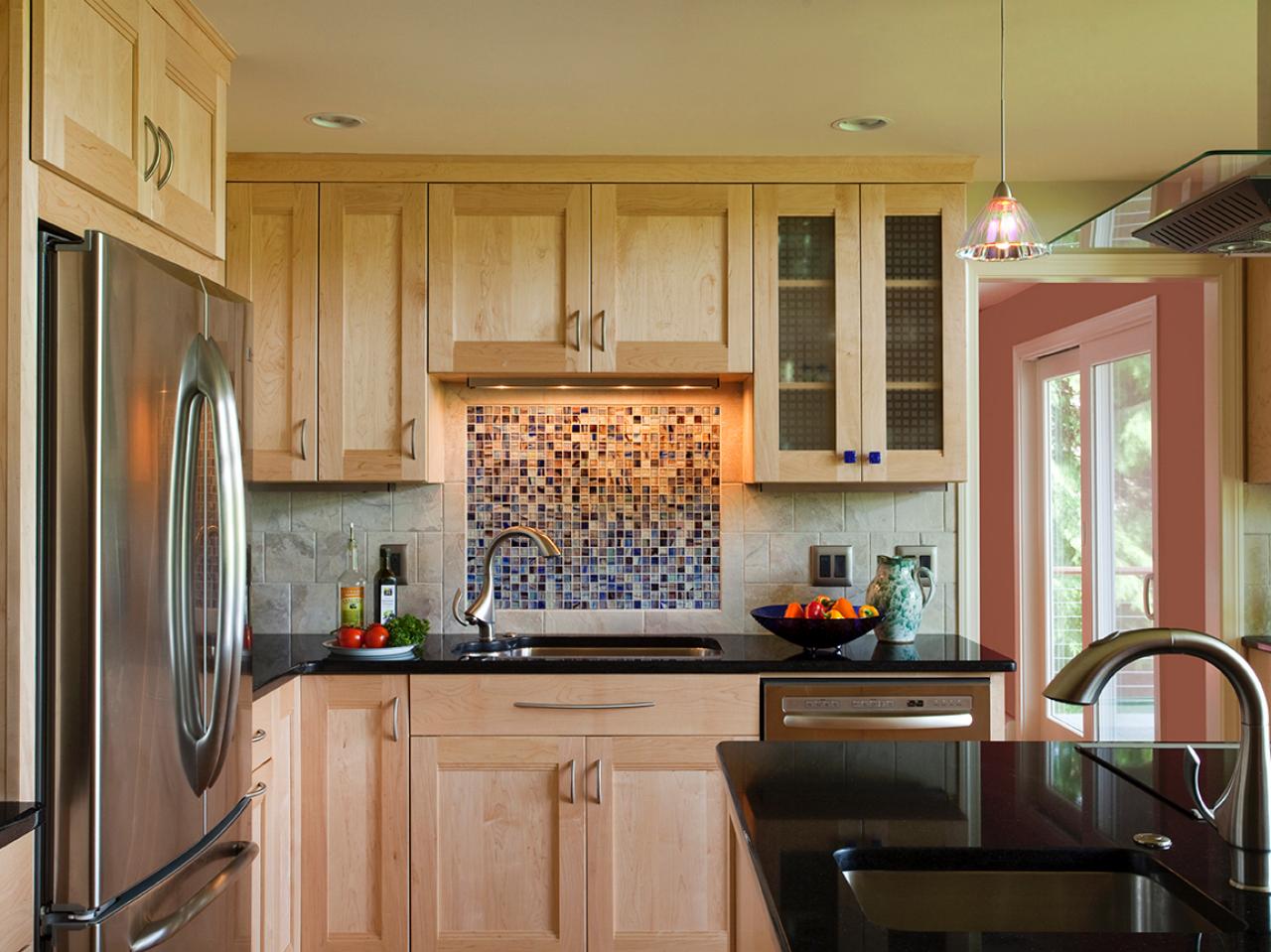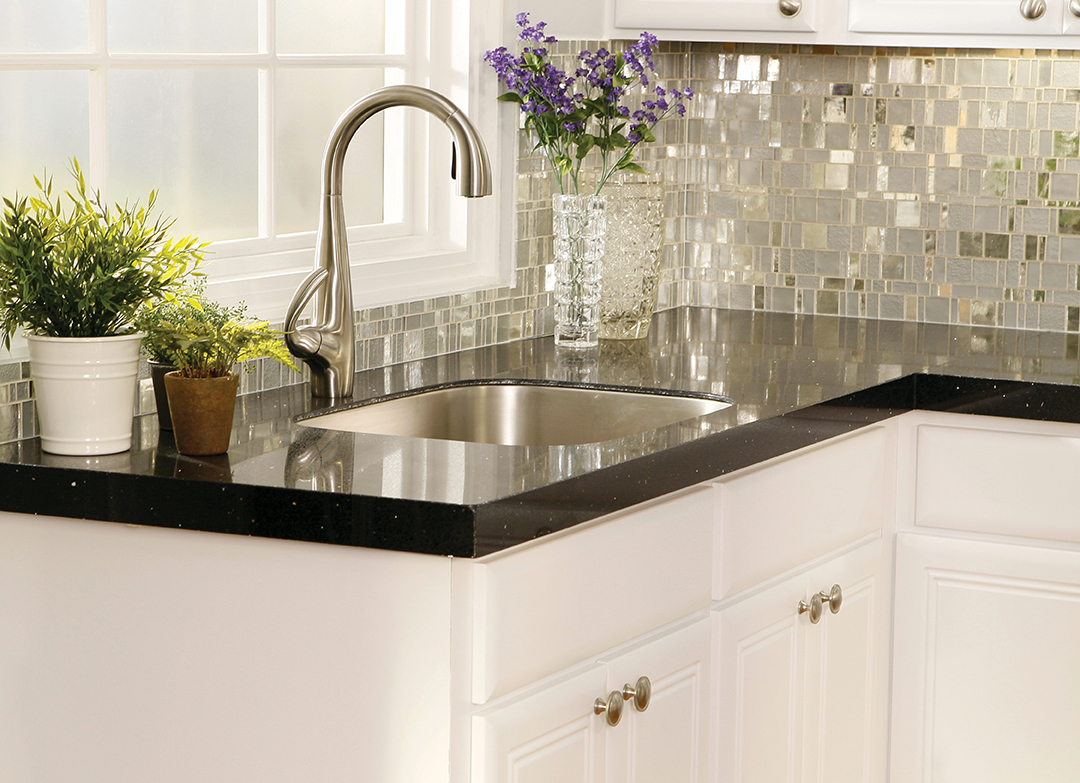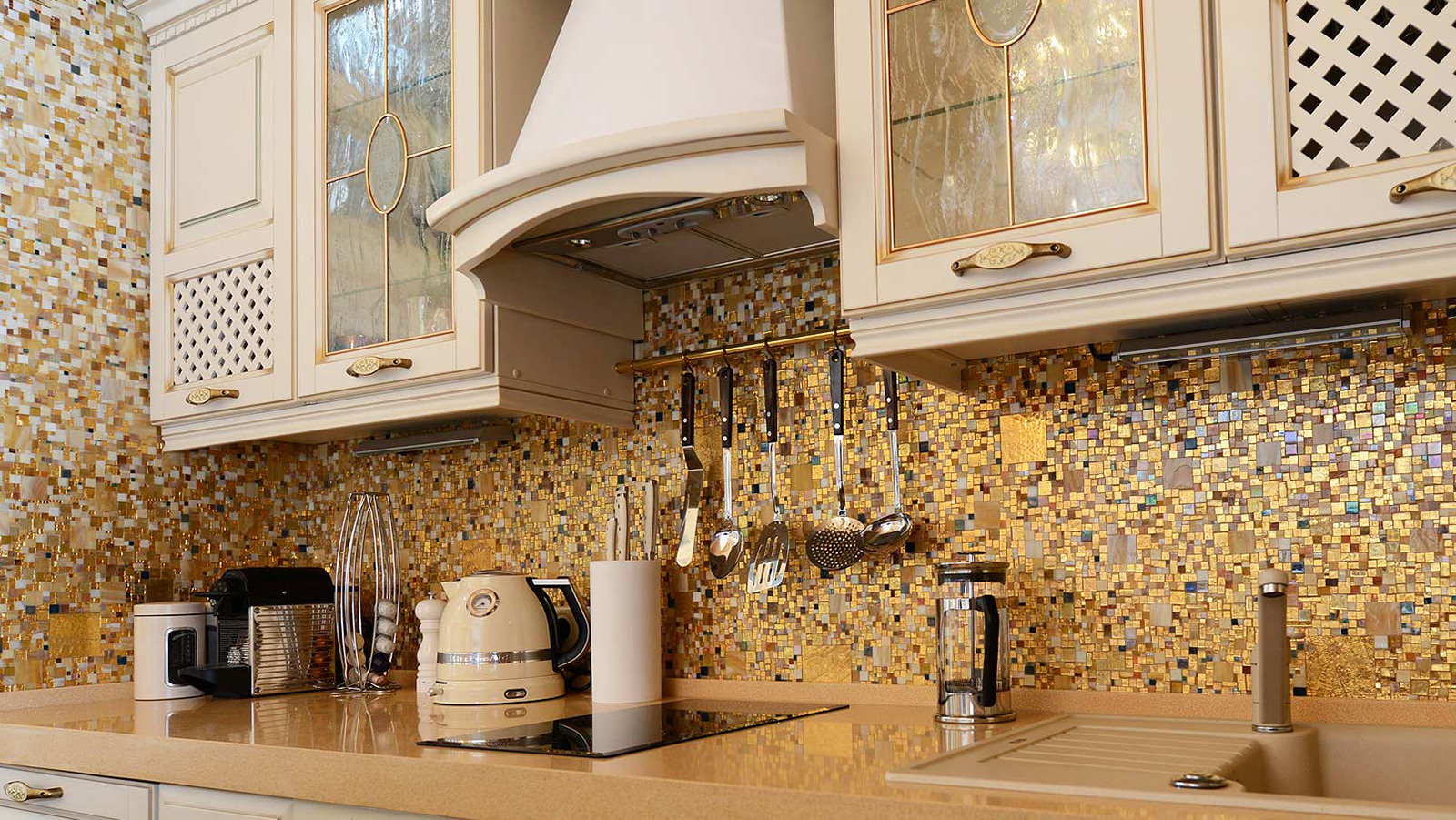Mosaic for the kitchen: a variety of species (25 photos)
Content
- 1 Determining the format and size of products
- 2 Design Options
- 3 Features of ceramic products
- 4 The specificity of glass compositions
- 5 Stone Mosaic Selection
- 6 Advantages of the porcelain model line
- 7 What can be a pearly surface?
- 8 The essence of metal and mirror mosaic
- 9 Stages of forming an apron on the working wall
Mosaic in the interior of the kitchen successfully displaces competing types of bulky finishes, such as porcelain stoneware, glass, ceramic tiles, stone, even though these materials are used for its manufacture. The secret of the demand for decorative cladding is its grace and non-triviality, the relative ease of installation and the variability of compositions.
Determining the format and size of products
A black or mirror mosaic in the interior (it was also thrown off) will be appropriate only if the parameters for its placement in the workspace were determined before the purchase. Information for those who do not yet know how to put the mosaic:
- the considered alternative to wall tiles is not implemented as a scattering, but in the form of panels (they are much easier to transport and lay) - matrices can have different sizes, but usually for finishing 1 square meter. 9 meters are enough;
- mosaic for the kitchen is formed from small fragments - chips, which are the components of the ornament. The larger each chip, the simpler the panel image;
- the most successful form of tiles is a square, with it less material consumption and a more harmonious composition;
- Rectangular chips are also popular, especially white and black, you can often see skins from circles, rhombuses, triangles and hexagons, but here mosaic laying will be more difficult.
Parts - chips - can be connected using polymer jumpers, but the latter often break off during installation. If the mirror, plastic or metal mosaic on the apron is glued with its back surface to the polyurethane mesh, conditions are created for tight fixing on the surface, additional reinforcement of the composition occurs.
Design Options
There are several common patterns for combining mosaics in the kitchen:
- monocolor - a panel from a mosaic for a kitchen is laid out with identical modules in form and color, a restrained combination is formed;
- mix - in this case, glass or mosaic tiles for the kitchen are used, moreover, all the chips have the same size and shape, but different shades of the same color spectrum;
- gradient or stretch - here only a rectangular layout is used, the matrix is composed in the form of a transition from a more to a less saturated shade;
- mural or finished tile mosaic for the kitchen on an apron - in this case, a pattern already formed in the factory is glued to the wall.
There is a general rule: the more colors chosen, the more expensive such a kitchen design will cost.
Features of ceramic products
Ceramic mosaic for the kitchen is made of full-weight tiles, so it has the same operational properties: high thermal, wear and moisture resistance, durability, a variety of textures. Such types of mosaics, especially light ones, unlike the “progenitor” and skinheads look much more colorful and elegant, create an association with handmade work and fit more naturally into the design of the kitchen.The downside is the high cost compared to the same ceramic tiles for mosaics, increased grouting consumption.
Skinal made of glass, in turn, have a rich color scheme, but lose in the assortment of textures: ceramics can be glossy, antique, imitating stone and pebbles, matte, rough.
The specificity of glass compositions
Glass mosaic for the kitchen on the apron is the most popular type of finishing material in this area, as it has a loyal value, beautiful performance, long service life and does not require special care. The small size of the chips and high-temperature firing guarantee enhanced material strength, which determines the appropriateness of its use in the kitchen space.
Skinal can be of several types:
- homogeneous - compact glass blocks can be matte, like glass-windows polished by the sea, or glossy, like colored lollipops. Moreover, minerals, spangles, clumps of foil can be embedded in a bright or beige mosaic;
- smalt has improved operational characteristics, it is durable (therefore it is often used for floors with mosaics), it has the effect of man-madeness, internal glow. The range is formed on the basis of a wide range of coatings and additives;
- Mineral glass looks like precious stones, since iridium or aventurine are added to the mass. An expensive product is formed with excellent aesthetic properties - it can flicker or create a rainbow surface.
Stone Mosaic Selection
Ceramic mosaic tiles for the kitchen, unfortunately, do not have the same strength indicators, moreover, the stone variations are more unique and inimitable in the formation of the panels. But the material is porous, therefore, to preserve its original properties, it is coated with special protective compounds. The thickness of the cladding can reach 10 mm, when choosing, you need to avoid textures with high porosity, otherwise the apron will be afraid of beet juice and red wine - persistent dyes.
There are rough and polished chips, as well as having a carved or embossed ornament. Stone tiles can be combined on a single grid basis with smalt, glass or ceramics.
Advantages of the porcelain model line
Finishing the kitchen with such a mosaic is quite justified, since the material has the strength of natural stone and is devoid of a significant drawback - the porous structure, moreover, it is sold in an affordable price range. The color palette is natural and harmonious, beige and a variety of brown shades prevail, there is no such gloss that an apron for a kitchen made of plastic or tile has.
What can be a pearly surface?
This is a very beautiful finishing material with unique characteristics: it muffles and reflects the directional light, making the rays soft, scattered, iridescent in the rainbow spectrum. Natural mother-of-pearl products have a high cost, but they can be replaced with mosaic of smalt or glass with a pearlescent coating.
The essence of metal and mirror mosaic
The first type is made of rubber, plastic or ceramic and is covered with a layer of brass, stainless steel or bronze - this is how chips of gold and steel shades are formed. This solution is very practical, since the metal cladding is not demanding in maintenance and is not afraid of mechanical influences.
The thickness of the mirror mosaic apron does not exceed 5 mm, it is wear-resistant, but needs regular cleaning from contamination. There are interesting tinted panels with square or rectangular chips.
Stages of forming an apron on the working wall
To harmoniously lay the mosaic in the kitchen, you need to form in advance the gates for wiring for switches and sockets.The apron should be laid out only on a perfectly flat surface, a level is used to check the walls, then they are primed and proceed to dilute the glue in accordance with the manufacturer's instructions. To facilitate the work, markup is performed.
It is easiest to deal with self-adhesive mosaics, which is why it is popular with beginners. If a mosaic on the grid was chosen, this base is put on glue, and products on paper, on the contrary, are laid out by paper. The glue is evenly applied to the treated area, the first mosaic sheet is placed on it, combining with the upper marking, slightly pressed. Sheets need to be quickly distributed on the surface, because the solution sets in 10-15 minutes. For those who still do not know how to glue the mosaic, experts recommend starting with applying the composition to small areas in order to have time to carefully process them.
Putting an apron on a work wall, further equipped with sockets, will not be easy, because you have to make holes in the mosaic. With the help of a marker, the problem zone is marked, the corresponding shape is cut using a diamond disk. A brush or a knife wrapped in a rag will help clean ceramics or glass from excess adhesive solution.
Finishing manipulations in the form of grouting tile seams are carried out according to the same principle as in the case of floor mosaics: they are parted according to the instructions on the packaging and applied with a rubber spatula, after drying, they are sanded with a damp sponge. In the end, you need to thoroughly wipe the entire surface with the mosaic laid, to eliminate stains. Experts note that, in general, laying mosaics for an apron in the kitchen is no more difficult than tiling the floor.
